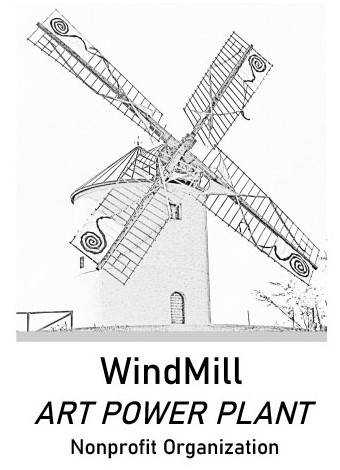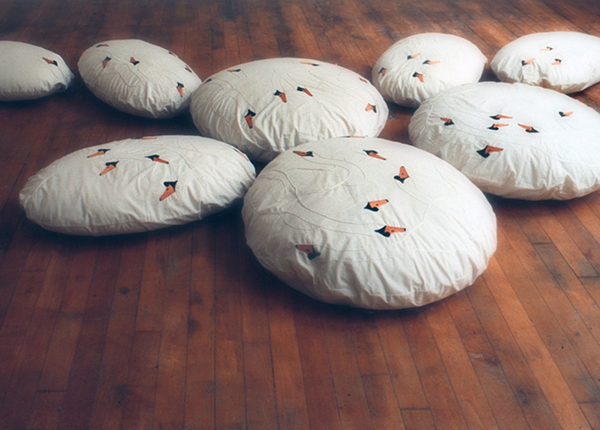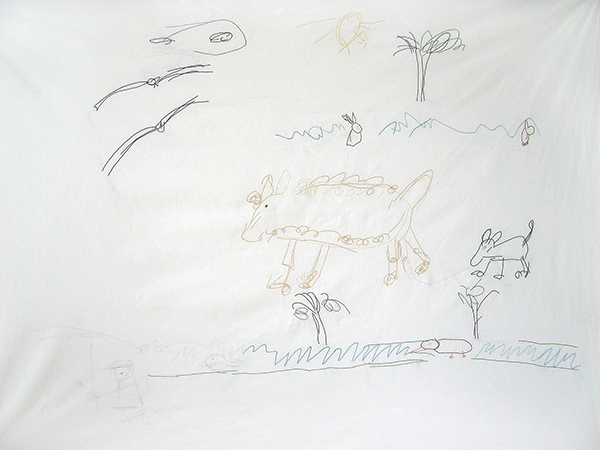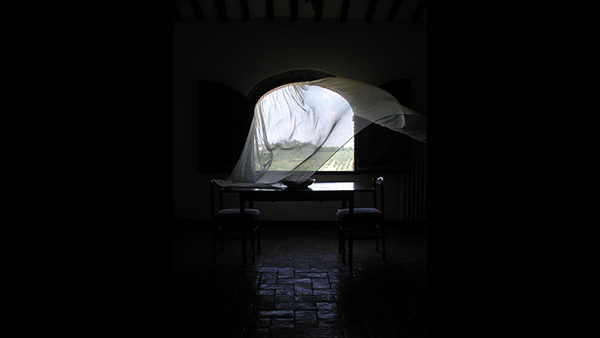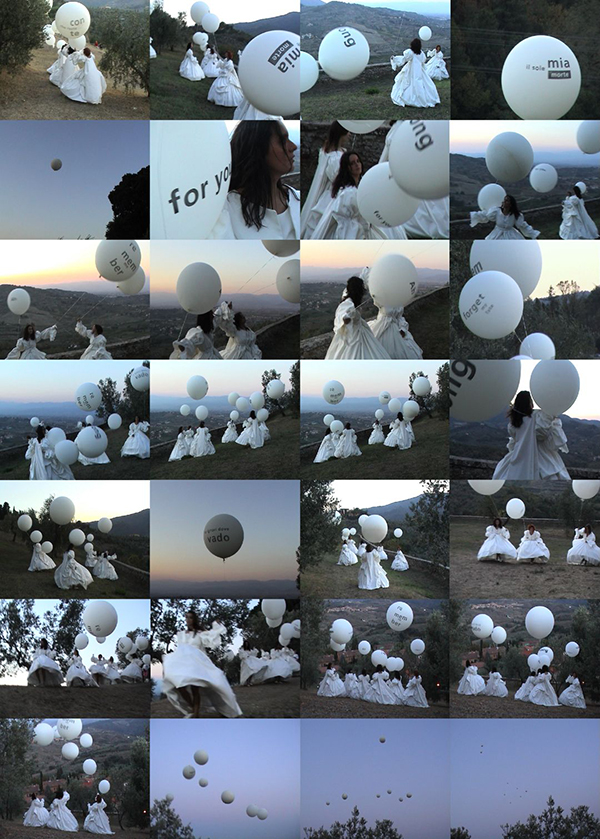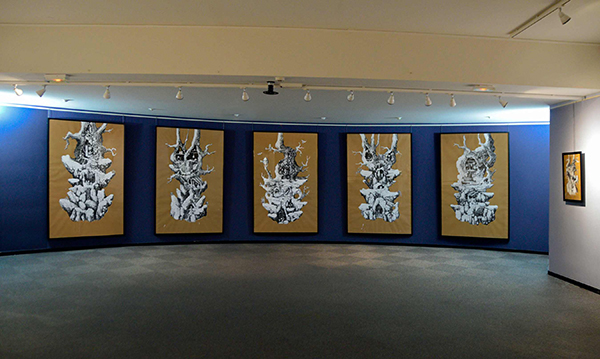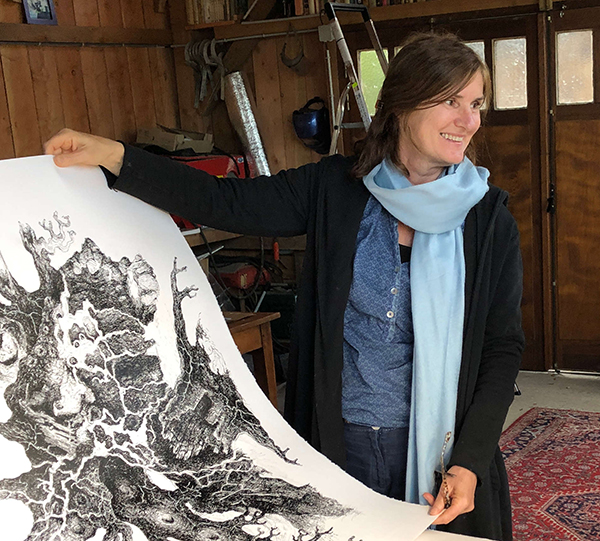
Biography
Hoogvliet, Rotterdam and Bruinisse, Zeeland
1960 – 1977
In 1960 I was born in the Bahreinstreet in the “oil’ neighborhood of Hoogvliet, Rotterdam. I grew up near a wood of flare stacks and practically under the huge chimney pipe of Shell where my father used to work. The smell of gas and oil penetrated our lives. Sometimes there was an explosion and the inhabitants were advised to close the windows during the day until the wind blew the air clean.
A schoolteacher said once: ‘Around the year 2000 one will not be able to see the sun because of the pollution’. This remark produced a big fear and accompanied me all my life. The word climate change was not known yet. I think.
My family, and thus my parents, were originally from the isles of Zeeland. Every weekend we traveled to my grandparents in Zeeland. My father left Zeeland after the big flood of 1953. After the flood, an ingenious system of dams and barriers was made to protect Zeeland from the sea. And when they were almost finished my parents choose to move back to Zeeland. I was twelve years old.
My family is originally from the isle of Tholen where a big part of the family practices a heavily orthodox Protestant religion. My parents were not religious. My father bore a grudge against all things religious, so they choose to move to, instead of the isle of Tholen, the isle of Schouwen Duiveland. We settled in the mussel fisher village Bruinisse. Also other family lived in this village. The ‘modern’ part.
Instead of walking to high school in 5 minutes’ time, I had to bike to a fairytale-like city called Zierikzee, back and forth, 24 kilometers a day. After a year of cycling alone against fierce winds sometimes chilled to the bones and being pestered by two boys from ‘my village’ I was presented to a girl who lived in the same village. She became my classmate in the 2nd year of high school. For 5 years we were together on our way to school and back. The fun we had was enormous. Sometimes we made detours and cycled home along the sea dike instead of following the main road over the middle of the island.
I share these childhood experiences with you because in a later stage of my life they are to play an important part in my photography and video projects. The Zeeland years were significant. On one hand, I felt safe in the bosom of my family, and on the other hand, I couldn’t wait to go elsewhere.
Middelburg, Zeeland
1977 – 1981
As my parents stimulated me to study, I choose to study at the Pedagogical Academy (PA) although I longed to go to the Art Academy. At the time this was out of the question. Afterward, I think it has been for the best to choose to go to the PA because I was such an innocent child and I knew nothing at all. The PA was like a kind of pre-prep to the world of art, classical music, and literature. I studied in Middelburg, peninsula Walcheren, Zeeland.
In Middelburg lives and works the artist Marinus Boezem. He and his wife Maria Rosa, of Italian origin, were very active in the art scene. They organized exhibitions, invited international artists. I got to know the works of the Italian Arte Povera artists. I recall the grain market in which Boezem created ‘The Podio del Mondo dell’Arte’. He invited international artists to realize artworks, mostly stone panels with written text inserted in the floor surface. Among them the artist Maurizio Nannucci. Twenty years later, during my stay in Tuscany, I met him in person.
In Middelburg I studied and volunteered to work for the ‘Rijn Schelde Institute’ who researched the developing industrial areas in Zeeland. The government decided Zeeland had to be ‘opened’ so In the 70ties silhouettes of buildings of petrochemical factories and even the round couple of a nuclear centrale became part of the landscape. At the Institute, we organized and participated in protests. Gave lectures. I typed out the research papers of the scientists.
Art Academy S. Joost, Breda
1982 – 1987
When I finished my study, there was no work as a teacher. With friends, I set up a group to teach Dutch to the women of newly arrived immigrants. And then it was my 21st birthday. I was an adult. And I was admitted to the Art Academy St. Joost in the city Breda, in the province of North Brabant close to Zeeland and Belgium.
Trained by teachers as Robert O’Brien and Harry Boogers I had a fabulous 5 years at St. Joost. It was like working in an experimental art laboratorium under the inspiring guidance of O’ Brien. Harry Boogers who loved French and Russian literature, brought us books to read from his personal library. A fellow student, Marieke van Diemen, became a lifelong friend. I also stayed in touch with Petra van der Schoot. Shortly after my exams, I was invited by the artist Luciano Fabro for an artist in residence period in the “Casa degli Artisti’ in Milano. I met Fabro in Gent during the much-bespoken exhibition ‘Chambres d’ amis’ organized by Jan Hoet.
Casa degli Artisti, Milano
1988
So I went to Milan. Fabro brought me in contact with a student of his at Brera art academy, Elena Crisanti. She looked for someone to share her apartment with. Fabro was very fond of Elena. She is honest, intelligent, and not shy, says what she thinks. I remember a small odd exchange at an opening. He was surrounded by us and some other female students. He complained I never kissed him like the others. Maybe I was not used to the more affectionate culture in Italy. Above all, I didn’t know the man very well, he is a professor, so why should I kiss him? He called it my calvinist attitude. Even my drawings he called ‘calvinistic’. I took it as an insult. Later an Italian friend told me he probably meant it as a compliment.
It is true, I was formed by my upbringing in Zeeland. But also trained in the conceptual minimal kind of art which was practiced at the art academy which was like a language in comune with other artists of my age in Milan. I was extremely shy and not used to the hard concurrence of the art climate in Milan. Nevertheless, I was ambitious and curious but I was very ‘into myself’ as well. ‘You live on your own island’ said my friend Marieke once. Fabro was a great artist, an intelligent man, and witty. Elena became a good friend and I was always in the company of her and her friend Liliana Moro who also studied at Brera with Fabro. I shared an apartment with Elena in Via Breda, Sesto S.G., Milano. Liliana and her mother lived in the same apartment building. To my knowledge, Liliana still lives here.
In the Casa degli Artisti, I met the artist Hidetoshi Nagasawa, a lovable man. He used to say that he decided to live in Milan because he came by bike from Japan and his bicycle was stolen in this city. From here friendships started with him and other artists. I met Gilberto Zorio, Yannis Kounellis, Marisa Merz, all my heroes of those days. Zorio and Kounellis helped me to get out under the wings of Fabro and gave me the address of another workspace. They probably don’t remember. For me, it was a significant choice. It looked like the way out of a snake nest because of the mistrust or jealousy or whatever it was I experienced in the ‘Casa deli Artisti’.
This year had a big impact on my carrier. Afterwards I went back to the Netherlands. I decided to apply for the Artist in Residence the Rijksakademie in Amsterdam where I was taken in for 2 years.
Rijksakademie, Amsterdam
1990 – 1992
So here I was at the Rijksakademie in Amsterdam. During Rijksakademie I developed a series of sculptures in lakes. Recipients, floating fountains, the relation between water and sculpture were fundamental. My water sculptures collected rainwater or water from the lake or, influenced by Italian gardens sculpture, became entrances to hidden islands.
Strange enough I felt pushed into the ‘public space’ art by the professors and influencers at Rijksakademie and I didn’t want to follow that road. Jan Fabre asked me to apply for the Prix de Rome for Theatre. I didn’t. My health was not good. Since high school, I suffered from severe mouth infections. It became worse and worse. Only In my Milan period, it disappeared. But entering Rijksakadamie it came back. Speaking was extremely painful. After Rijksakadamie I shifted my attention from sculpture in the public space to cloth and embroidery installations. In my first works, I used the swan image as an icon of transit. A transit to another realm by making installations referring to the Hortus Conclusus, in my case this Hortus was a white realm wherein were to be found softness, silence and peace. No pain. I felt no pain while I did the embroidery. I could sit still. I could keep my mouth closed. Only my hands had to move.
Amsterdam
1992 – 1997
II worked for 5 years on my swan embroideries in my studio at the Haarlemmerhouttuinen, Amsterdam. In the Netherlands, the embroidery installations were not well received by the official critics. Where before I seemed to have had a promising future in the ‘public art sculpture’ scene, now I had almost no exhibitions. As a museum director said to me: ‘When a man embroiders he’s a hero, when a woman does she’s a ‘dumb bitch’.
Through Liliane Moro I met the art curator and critic Saretto Cincinelli and artist Massimo Barzagli, they at their turn introduced me to artists like Paolo Fabiani, Vittorio Corsini, Daniela de Lorenzo and so on. Until today they are beloved friends. Saretto started to invite me to take part in his exhibitions in Italy. I felt re-established in some way. I was happy working in Italy. I promised myself, the sooner it will be possible (read financially), I will return.
But financially I had hard times. While all my friends, same study, same kind of carrier, same kind of exhibitions, same kind of possibilities, got stipends, year after year, I got nothing at all. Nothing. For years. How was this possible? Even when I took part in an Italian exhibition with a Dutch fellow artist and we both applied separately for a subsidy to cover the costs for transport, assurance, travel, and stay…. he got the money. The commission wrote it was considered for him as an important carrier move but for me not. He was so kind to share his subsidy with me.
I worked in Italy for most of the 90s.
Capena and Rome
1997-2000
In 1997 ‘it’ happened, I got a so-called ‘work’ stipend for 2 years. I left and installed myself in Rome. The beginning was lonely, I lived near the Via Boccea a bit out of the city. The mouth infections continued to pester me. But after 3 months: a miracle: they stayed away.
I made many friends. Was invited for exhibitions. I was happy. After my work period in Rome, I divided my time between Amsterdam and Tuscany. As Saretto lives in Tuscany, My exhibitions took place mostly in Tuscany. Prato became my second home town.
After years of embroidering swans, this image was substituted by the use of lines that retrace the sketches my father made during the last year of his life. Later on, the lines take shape from the cloth on real clothes, dresses, used in installations and performances.
White swans, black swans
1989 – 2003
Embroidery.
In this decade the same theme has been developed in all its possible patterns.
Enclosed circles
All works are related to the island of my childhood. The old sea-dykes, enclosing the village I grew up in, defined the world. And the swan became one of the most occurring dwellers during the 40 years the sea-arms around the island were closed by a system of dams.
The islanders had lived in another zone, apart from the rest of the Netherlands, in another time, in enclosed circles, behind imaginary lines which after centuries were now to be crossed. From this transformation, a permanent longing was born for a lost island paradise and this fascination led me to reflect this paradise in a work of art.
White swans
Oases and paradises are restricted areas, like the Hortus Conclusus. You have to be dead or at least receive some sort of help to get inside. Virgil was Dante’s guide into the other world. More recently a rabbit and a cat guided Alice into and through Wonderland.
An old Dutch nursery rhyme tells us of swans: white swans, black swans / who wants to go to the land of the angels? / this land is closed / the key is broken / and no smith in this country that can mend the key.
Embroidering the edges of space
Space and time play an essential role in embroidery. My pieces affect the space of their surroundings. It is occupied and simultaneously renewed, by tents and big-sized curtains that generate a world of sleep, which is emphasized by the countless repetitions of motives. The works expand thus discovering and devouring the edges of space. Here the perimeters of space are being embroidered.
The fabric is folded across the existing hard structure and as it unfolds, it opens a soft inner world, a quiet realm, an oasis for the soul.
Relative time
Time in embroidery is the ally of the maker. Homer’s Odyssee is significant here. In this story, two opposite yarns are spun in a parallel manner. Ulysses voyages on the one hand and on the other the world that awaits him, Ithaca the island where his wife Penelope, as myth has it, managed to control time by weaving.
Penelope manages to slow down time by undoing at night what she did weave the day before. Surprisingly, in contradiction to Odysseus, she’s able to travel in the enclosure of her room, back and forward in time, keeping in hands her own destiny.
Nowadays mythical connotations between handiwork and time seem to be forgotten and the Penelope of today is a passive woman. My work tells about this friction and in this way the embroideries become an interaction, between the present and what comes, between Hic et Nunc and infinite time.
This interaction materializes through the use of enormous quantities of fabric and of time. While making the repetitive and numerous stitches one tends to lose the notion of time.
Shreds of thought, expectations and memories are stitched into the fabric by needle and thread. These shreds can be seen in the work the way a poem can be read between the lines. The spectator is invited to do so but whether or not he does, is up to him.
Notes: 1. Dutch etymological dictionary: embroidery, derived from the French “bordure”, which derived from border “edge, edging, hemline”.
The garden of speech
1995 – 2010
In 1992 my father fell ill. In a short time, it became clear that he was suffering from a very malicious disease. He was a very silent man. He had his piece of land where he spend all his free time. In his last days, unable to work in his garden, he used to sit on the couch at the window to draw everything he saw or was thinking of. His sketchbook filled up with his scrabbles.
We had fun pointing out his interpretations of the neighbor, big animals, his vegetable plot and travel scenes: a new way of conversation was born.
After the death of someone, all small things disappear and so do all the small memories connected to them. Boltansky wrote: “the big history lies down in books but the small history is very fragile”.
Two years after the death of my father, in 1994, I started to embroider his sketches on sheets and pillows. The work is still in progress.
Tokyo, Japan
1999 – 2000
A turning point in my career came in 1999, during a stay in Tokyo. Inspired and stimulated by Bûtoh performers Yoshito and Kazuo Ohno I planned to use my embroidery in a series of performances. The series of performances were culminating in several exhibitions in the Netherlands and Italy. Meeting and spending time with photographers as Nobuyoshi Araki made me took up photography.
Tuscany, Italy
2000 – 2002
In 2000 I moved to the countryside near Tavarnelle Val di Pesa in Tuscany. As I had no car nor bicycle I started the day with a morning walk and, in my proud possession, my first real digital camera.
Thus, I retraced my life in Tuscany in images. I started a travel trajectory between Tuscany and Zeeland. Working on my present life in Tuscany and my memories of Zeeland. I started filming the Zeeland region on the island of my childhood years, custodian of my history and past. Photography and video have been used by me as a visual exemplification of my feelings as in the ‘virtual postcards’ project which I periodically sent out on the internet expressing my emotional state in evocative images (depicting Zeeland and Tuscany in particular). Songlines of country music accompanied the pictures. I was fond of these songs because of their sentimental views on wandering: desire, leaving, nostalgia, coming home.
When I send out my ‘e-cards’ from Tuscany, it was in the early years of the internet, blogging was in the starting phase. In 1999, according to a list compiled by Jesse James Garrett, there were 23 blogs on the internet. Pier Luigi Tazzi received my e-cards while living in Tokyo. As he is from Tuscany, it made him nostalgic of his home. In 2004 he invited me to take part in the photography exhibition Spread in Prato with my e-cards. They were printed as real postcards. It was so much fun. It was my first expo with photography work.
The Allier, France
2008 – now
From 2002 to 2008 I worked mostly in Amsterdam. I had a job at a bank to provide in my living. From 2008 and onwards I spend a lot of time in France where my companion bought a house. I photographed daily. And made drawings. Also in my Tuscan period I made a lot of drawings of my daily experiences. Since Tuscany, where I lived in the countryside as well, a bit in solitude, I have an interest in the subject of hermits. I love the paintings of Hiëronymus Bosch, Joachim Patinir, Jan Adriaensz. van Staveren.
Inspired by 16th-century woodland and hermit engravings, I began a series of small drawings of trees and rocks whose hollows and caves are inhabited by hermits. Sometimes you see a blurry face here and there because I didn’t want to draw them very explicitly. They have weird little looks: a kind of cat or owl eyes, but not too recognizable.
Also, at this beginning of the series of hermit drawings in 2017, I thought a lot about Bûtoh, a subversive dance that is characterized by its slowness, its poetry, and its minimalism. This dance from Japan is one of my passions, brilliantly performed by renowned dancers like Tatsumi Hijikata and Kazuo Ohno.
Old videos show Hijikata dancing in the forest. I remember with fondness the unforgettable sessions in the studio of Kazuo and his son Yoshito in Yokohama in the years 1999-2000. In one of these sessions, Yoshito asked his students to pretend to be trees and Kazuo, the grandmaster, 94, joined them in “being a tree”. We drank sake with flakes of gold at New Year 2000.
Those old dancers are now dead, even Yoshito, Ohno’s son. They seem a bit outdated, if not forgotten in the 21st century, as is the hermit theme. Now that we’ve passed through the lockdown and lived in our bubble, maybe it takes on a different meaning.
Another one of my inspirations comes from the book about the Dutch writer W.F. Hermans written by Freddy de Vree. Hermans tells the story of the first priest sent to an Indonesian island of which I can’t remember the name. He met an early, atrocious end, he was eaten by the tribe. His missionary zeal was too insistent. The second priest who was sent got along well with the natives: he didn’t have such a missionary zeal, he only half believed in it.
On this island he lived happily all his life, in his cabin, growing his vegetables and herbs. At the time, the Dutch government or church regularly sent their representatives to check on how the missionaries were doing. One day one of them knocked on the door of the priest who was in his cabin and asked: “Are you at home?”. Yet the priest shouted very loudly: “I’m not here!” Then he went through the back door and fled into the jungle.
I loved this little story. As I read it, I immediately thought of my brother who pretended not to be home for a very long time, he even didn’t leave his house for years. He felt a deep need for solitude maybe to maintain a minimum of mental balance. Probably hermits have a similar mind.
Finally, it are the images of hermits from the 14th, 15th and 16th centuries, the Japanese Bûtoh dancers of the 20th century, the priest from Indonesia, and my brother who most inspired the characters living in my tree drawings.
Regarding trees, in the Allier big oak trees are all around in the meadows and in the famous Forêt de Tronçais, the 500 years old oaks seem to come straight out of a fairy tale. Living in a landscape with hills covered my woods and meadows, I experience from close by the amount of trees dying because of the draught. The climate change which I fear so much since when I was a child, becomes a harsh reality. ‘Humankind is inclined to destroy. Human beings in society will often be cruel. The virtue of compassion is often solitary. The individual creates and survives’.
During walks along the riversides of the Bouble, I photograph the suggestive rock formations which remind me of early Italian paintings of rocks and hermits. In 2019, when I started the large drawings, a friend who was recovering from a serious illness saw the first of the big trees and asked me: “Can I live in one of your trees?”
This question gave new meaning to my project. I thought of the sense of shelter, the sense of longevity, and the silent presence of a tree. it was a wonderful sensation to give each tree its character by dedicating it to a close friend surrounded by his or hers favourite belongings.
The pandemic gave rest and even more solitude. Now I feel it is time for a change. Urgently.
Curriculum
Group and solo exhibitions
Conceptual art, art video, photography, drawing
- 2020 Je ne suis pas là (solo exhibition)
La Pléiade, Commentry, FR / catalogue - 2020 L’altra metà del cielo
Museum MAC,N, Monsummano Terme, IT - 2018 Appunti sul paesaggio
Casa Masaccio, San Giovanni Valdarno, IT
Curator: Serena Trinchero - 2016 VJ
Fest Miden, Kalamata, Greece
Screening video/slideshow Arcopal Lullaby - 2015 Ripensare il medium. Il fantasmo del disegno
Casa Masaccio, San Giovanni Valdarno, IT / catalogue
Curator: Saretto Cincinelli et Christiana Collu
Artists:
Giovanni Anselmo, Massimo Bartolini, Massimo Barzagli, Emanuele Becheri, Luca Bertolo, Chiara
Bettazzi, Alighiero Boetti, Chiara Camoni, Francesco Carone, David Casini, Giulia Cenci, Connie Dekker,
Daniela De Lorenzo, Rolando Deval, Marius Engh, Emma Grosbois, Carlo Guaita, William Kentridge,
Ketty La Rocca, Sol LeWitt, Paolo Meoni, Franco Menicagli, Oscar Muñoz, Jaume Plensa, Davide
Rivalta, Robin Rhode, Andrea Santarlasci, Massimiliano Turco, Ignacio Uriarte, Sophie Whettnall. - 2015 Little Italy
Project Doppio Concentrato con Massimo Barzagli, Icastica 2015, Arezzo, Italy - 2015 I love and am loved
Project Doppio Concentrato con Massimo Barzagli, Firenze, Italy - 2012 Opid Hus
AIR NES, Skagaströnd, Iceland - 2011 Moving
Gallery Dryphoto, Prato, IT
Artists:
Luigi Ghirri, Olivo Barbieri, Guido Guidi, Vittore Fossati, Vincenzo Castella, Andrea Abati, Dennis
Marsico, Thomas Ruff, Francesca Woodman, Toshio Shibata, Sakiko Nomura, Kazuko Wakayama,
Hiroto Fujimoto, Marco Signorini, Fabio Casati, Marco Baroncelli, Filippo Maggia, Carmelo Nicosia,
Paolo Bernabini, Sislej Xhafa, Shao Yinong & Muchen, Shimabuku, Connie Dekker, Gea Casolaro,
Zheng Guogu, Giovanni Ozzola, Robert Pettena, Margherita Verdi, Rita Linz, Tancredi Mangano,
Michael Schmidt, Nobuyoshi Araki, Renate Aller, Andreoni e Fortugno, Natalie Magnan, Margot Pilz,
Alessandro Mencarelli, Stefania Balestri, Mariette Schiltz, Stefano Boccalini, Paola Di Bello. - 2010 About the Utopian Display
Casa Masaccio, S, Giovanni Val d’ Arno, IT
Artists:
Yael Davids / Face, Seila Kameric / Dream House, Ange Leccia / La Mer, Paolo Meoni / Bound, Robert
Pettena / One Drop, Mark Lewis / Algonquin Park, North Circular, Farid Rahimi / Fujii, Sophie Whettnall /
Over the Sea,Shadow Boxing Kan Xua / In Focus. Out Focus, 100 Times, Cyprien Gaillard / Real
Remnant of Fictive War V, Guido van der Werve / Nummer acht Everything is going to be alright,
Michael von Ausswolff –Thomas Nordanstad Hashima, Al Qasr, Bahriyah Oasis, Sigurdur Gudjonsson /
Bleak, Connie Dekker / Zeeland - 2009 Gallery 1
Gallery Central Booking, New York, USA
Curriculum 2 Vitae Connie Dekker 2020 - 2009 Artisti Amici
Sala Uno, Rome, IT
Artists:
Laura Facchini, Jack Sal, Connie Dekker - 2008 La Collezione
Museum MAC’N, Monsummano Terme, IT
Curator: Alessandra Scappini - 2007 De Soto. Esplora te stesso
Alessandra Scappini, D’A spazio d’Arte, Empoli, IT
Artists:
Renate Aller, Stefania Balestri, Martina delle Valle, Rachel Morellet, ElisabettaScarpini, Donatella
Spaziani and Margherita Verdi
2006 Io so dove non sei: due viaggi al femminile
Video et performance, MAC’N et la Rocca de Monssumano Alto, IT / DVD - 2006 Misure del tempo
Museum per l’Arte Contemporanea, MAC’N, Monssumano Terme, IT / catalogue
Curator: Giovanna Uzzani
Artists:
Emanuele Becheri, Antonio Catelani, Fabio Cresci, Connie Dekker, Paolo Fabiani, L. Addo Trinci. - 2005 Collettiva
Gallery Dryphoto, Prato, IT - 2005 Floss weg, diapresentation
Theatre Benjamin, Groningen, Paesi Bassi - 2004 Zeeland, videopresentatie
GHL, Middelburg, Paesi Bassi - 2004 Spread in Prato (catalogue )
Gallery Dryphoto, Prato, IT / catalogue
Curator: Pier Luigi Tazzi et Dryphoto
Artists:
Nakahira Takuma, Carmelo Nicosia, Philip-Lorca diCorcia, Armin Linke, Isaac Julien, Sissi, Tomoko
Yoneda, Rosa Rossa, Italo Zuffi, Adi Nes, Gil Marco Shani, Rona Yefman, Michal Chelbin, Hiro Yumita,
Michelangelo Consani, Donatella Di Cicco; Souvenirs d’un pays lointain: Gruppo A12, Connie Dekker,
Luca Malgeri, Herbert Reyes, Addo Lodovico Trinci; Film: Bethan Huws, Mark Lewis, Pascale Marthine
Tayou, Surasi Kusolwong. - 2004 Video presentation Zeeland (solo exhibition)
GHL Middelburg, Paesi Bassi - 2004 Sonde
Museum per l’Arte Contemporanea, Palazzo Fabroni, Pistoia, IT / catalogue - 2003 Uscita Pistoia
Gallery SpazioA, Pistoia / catalogue, IT / catalogue - 2003 Les vacances
Curator: Frank Starik, Società Arti et Amicitae, Amsterdam, Paesi Bassi - 2003 Moto in luogo
La Rocca di Carmignano, Cantiere d’Arte Alberto Moretti, Carmignano / catalogue
Curator: Saretto Cincinelli
Artists:
Bernhard Rudiger, Paolo Parisi, Liliana Moro, Paolo Fabiani, Connie Dekker, David Casini, Massimo
Barzagli e Luisa Cortesi - 2002 Deep in the water… (solo exhibition)
Patrizia Pepe, Tessilform, Capalle, Firenze, IT - 2001 Abitanti
Curator: Bruno Corá, Palazzo Fabroni, Pistoia, IT / catalogue - 2001 Glaubst du… (Exposition Personelle)
Gallery Dryphoto, Prato, IT - 2000 Sans Papier
Foundation Het Consortium, Amsterdam, Paesi Bassi
Artists:
Walter van Broekhuizen, Kinke Kooi, Jans Muskee, Serge Onnen, Roland Sohier, Joris Wille, Connie
Dekker - 2000 “Waiting” (solo exhibition)
Foundation Caesuur, Middelburg, Paesi Bassi - 1999 (R)Entree
Foundation de Paraplufabriek, Nijmegen / catalogue, Paesi Bassi
Curriculum 3 Vitae Connie Dekker 2020 - 1997 Battaglie
Curator: Paolo Fabiani, Piazza Landini, Pratovecchio, IT - 1997 Casa mia é casa tua
Gallery Margiacchi, Arezzo, IT - 1996 Tell me what time the weaver sleeps who spun the breaths of blue
(solo exhibition)
Gallery Gentili, Firenze, IT - 1997 My gang will get you
Curator: Walter Bartelings, Vrieshuis Amerika, Amsterdam, Paesi Bassi
Curator: Walter Bartelings, Colesbukta, Spitsbergen / video - 1996 INCESTOUS
Curator: Tiong Ang,Thread Waxing Space, New York / video
Curator: Tiong Ang, Proton ICA, Amsterdam, Paesi Bassi - 1994 Borduren 2000
Museum De Lakenhal, Leiden, Paesi Bassi / catalogue
Curator: Doris Wintgens
Artists:
Christine en Irene Hohenbüchler, Arnoud Holleman, Antoniëtta Peeters, Berend Strik, Anna Verweij-
Verschuure, Colette Whiten, Connie Dekker - 1994 Borduren 2000
Bergkerk, Deventer - 1993 Prothesen
Curator: Tiong Ang, Gallery Nouvelles Images, Di Aia, Paesi Bassi - 1993 Time to time / Di volta in volta
Curator: Saretto Cincinelli, Castello di Rivara, Rivara, IT - 1992 Wiegelied (solo exhibition)
Foundation Hooghuis, Arnhem, Paesi Bassi - 1991 Un luogo da nessuna parte
Curator: Saretto Cincinelli, Palestra Ex Gil, Montevarchi, IT / catalogue - 1991 Evidenze Enigmatiche
Curator: Saretto Cincinelli, Gallery Container, Firenze, IT - 1991 Op water gebouwd
Culturele Raad Goes, De Oude Vesten, Goes,Paesi Bassi / catalogue - 1990 Unnatural Acts
Curator: Thom Puckey, De Tuin, Beuninge, Paesi Bassi / catalogue - 1990 Achilles
Curator: Doris Wintgens, Chateau Groeneveld, Baarn, Paesi Bassi / catalogue - 1989 Aula 1
Curator: Fred Wagemans, Rijksakademie, Amsterdam, Paesi Bassi
Sculpture in the public space - 1996 Quo vadis, wilde vaart
Middenweg 333, Watergraafsmeer, Amsterdam, Paesi Bassi - 1995 Mijn huis is jouw huis
Bozzetto per ‘t Zwanenmeer, Nieuw Vennep, Haarlemmermeer, Paesi Bassi - 1989 Senza titolo
Headoffice Natuurmonumenten “Schaep en Burgh”, ‘s Graveland, Paesi Bassi
Curriculum 4 Vitae Connie Dekker 2020
Some links
I am delighted to be a part of a book by the Dutch graphic artist / artist Melle Hammer entitled ‘LaLaLa’
with photo’s of my performance ‘The sky blows it, like this’. ‘LaLaLa’ was selected as one of the best
made books of 2015
https://raddraaier.nl/en/project/lalala-melle-hammer/
https://issuu.com/mellehammer/docs/lalala_pages
I lost al links and a lot of copies of articles in various art magazines. Here is what rests:
https://www.macn.it/fr/collection/dekker-connie/
https://www.artribune.com/report/2015/10/mostra-collettiva-disegno-casa-masaccio-san-giovannivaldarno/
http://www.dryphoto.it/new/2004/spread-in-prato-2004
Bibliography
2020 Catalogue Are you at home? La Pléiade, Commentry
2020 Connie Dekker en campagne, Patrick Debowski, La Montagne
2019 La fresque des écoliers inaugurée, Montvicq, La Montagne
2015 Photography ‘Lo Sofia il cielo. Così’ nel libro ‘LaLaLa’, by Melle Hammer
2015 Catalogue Il Fantasmo del disegno, Casa Masaccio, San Giovanni Valdarno
2012 A passo d’uomo, contribution Connie to artist-book of Laura Facchini
2006 Catalogue Misure del tempo, MAC’N, Monsummano Terme
2004 Catalogue Spread in Prato, Pier Luigi Tazzi, Gallery Dryphoto
2004 Catalogue Uscita Pistoia, Pier Luigi Tazzi, Gallery Spazio Uno
2003 Catalogue Moto in luogo, Cantiere d’Arte Alberto Moretti/Gallery Schema, Carmignano
2001 Catalogue Abitanti, palazzo Fabroni, Arte Visive Contemporanee
2001 Connie Dekker, Saretto Cincinelli, Flash Art Italia.
2001 L’arte del ricamo, Tempestini, il Tirreno, Journal.
2000 Connie Dekker speelt met de tijd, PZC, J.D. van Scheyen
1997 Casa mia é casa tua, Saretto Cincinelli, Flash Art Italia, estate
1996 Connie Dekker, Alessandra Scappini, Flash Art Italia, ottobre
1996 Incestious, Video Tiong Ang
1995 Over de scherpte van de naald, Peggie Breitbarth, Tubantia
1995 Tegendraads borduurwerk, Deventer Dagblad
1995 Borduren 2000, Wim van Beek, Telegraaf
1995 Woede en spot op Borduren 2000, Lucette ter Borgh, NRC Handelsblad
1995 De kunst van Borduren, Doris Wintgens, Kunstbeeld
1994 Borduren 2000, Catalogue Museum De Lakenhal
1991 Un luogo da nessuna parte, Catalogue Saretto Cincinelli
1991 La pratica delle idee: la critica in mostra, S. Neri, Titolo
1991 Un luogo da nessuna parte, A. Mugnaini, Titolo
1991 Un luogo da nessuna parte, A. Tempi, Next
1991 Esercizi dello spirito e dell’arte etc., G. Pozzi, L’Unita
1991 Op Water Gebouwd, Catalogue Culturele Raad Goes
1991 Bij Goes ligt de kunst in de gracht, H. Kroon, Volkskrant
1990 Praktijkbureau 1989 en 1990
1990 Achilles, Catalogue Doris Wintgens
1990 Soms lijken sculpturen te zijn etc., B. Roodnat, NRC handelsblad
1990 Unnatural Acts, Catalogue Philip Peters
1987 De Prix de Rome, Catalogue Museum Fodor
Swan Swarms #3, Lullaby
1991 – diameter round pillows: 1 m, thickness: 0.25 m – technique / material: embroidery installation, DMC on cotton
The Garden of Speech, Landscape
1994 – 1m20 x 0m60 – technique / material: embroidery installation, DMC on cotton
To the North Wind
photography 2002, video compilation 2015 – size: variable – technique / material: video
Lo Soffia il Cielo, Così
2003 – diameter round pillows: 1 m, thickness: 0.25 m – technique / material: performance, dresses made of cotton, balloons
Are You at Home?
2019 – 2020 – 1m30 x 2m00 – acryl ink and paint on kraft paper 160gr
